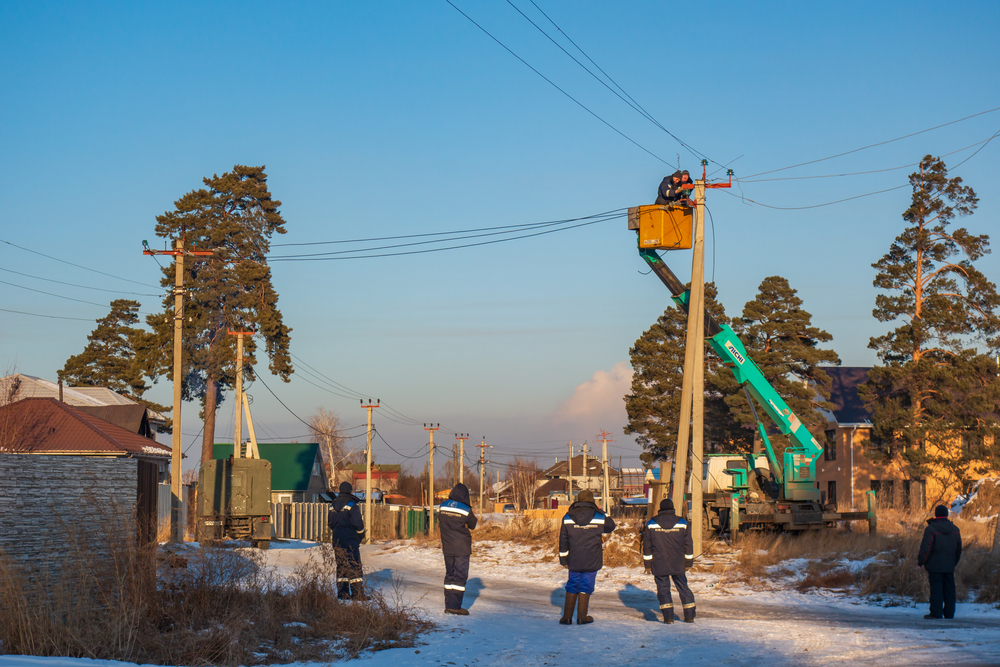We discuss the following topics in this blog:
- Ultra-lightweight aerial cable designed with unique safety measures
- Consequences of Aerial Cable Breakage
- Major Advantages of WorkSafe Cable
In addition to these topics, we shall also be answering the following FAQs:
- What is an Optical Fibre Cable?
- What is WiFi?

Contents
STL’s Innovation in Optical Fibre Technology
Sterlite Tech a pioneer in the field of optic fibre technology, Sterlite Tech presents the WorkSafe cable. A testament to our spirit of innovation, it is an ultra-lightweight aerial cable designed with unique safety features, the fibre account for which can be customized according to the user’s requirement.
How is the WorkSafe Cable Made?

The micromodule units consist of groups of fibres protected by an easily stripable and flexible thermoplastic material. To fortify the fibre. These microstructures are then surrounded with water spelling elements to protect against moisture ingress and are constrained in a poly filing sheath, which is provided with embedded strength members to protect them against buckling. As we innovate, we ensure safety is never compromised.
Consequences of Cable Breakage
The consequences of aerial cable breakage can be fatal. Poll infrastructure collapse caused by vehicle strikes can result in injury to personnel and can cause large scale damage to equipment, Not to forget the costs involved in case of such disasters by way of compensation to be paid to personnel and for investing in new equipment.
What are the Major Advantages of WorkSafe Cable?
Our product designers have developed one of a kind predictive braking capability in the product with embedded strength members engineered as such, that it breaks above a particular force, thus ensuring human safety. The micro modular design of the fibre enables ultra-compact fibre packing, hence reducing the overall cable diameter.
This enables easier handling and faster installation. These micro modules are kink resistant and easily removed without the need of tools resulting in faster network rollouts. The cable can transfer data at lightning-fast speeds in any weather condition due to its unique design, with a focus on strength and integrity. It is recommended for overhead network infrastructure and is compatible with aerial installations of up 55-70 m in length.
FAQs
What is an Optical Fibre Cable?
An optical fibre cable is a cable type that has a few to hundreds of optical fibres bundled together within a protective plastic coating. They help carry digital data in the form of light pulses across large distances at faster speeds. For this, they need to be installed or deployed either underground or aerially. Standalone fibres cannot be buried or hanged so fibres are bunched together as cables for the transmission of data. This is done to protect the fibre from stress, moisture, temperature changes and other externalities.
There are three main components of an optical fibre cable, core (It carries the light and is made of pure silicon dioxide (SiO2) with dopants such as germania, phosphorous pentoxide, or alumina to raise the refractive index; Typical glass cores range from as small as 3.7um up to 200um), Cladding (Cladding surrounds the core and has a lower refractive index than the core, it is also made from the same material as the core; 1% refractive index difference is maintained between the core and cladding; Two commonly used diameters are 125µm and 140µm) and Coating (Protective layer that absorbs shocks, physical damage and moisture; The outside diameter of the coating is typically either 250µm or 500µm; Commonly used material for coatings are acrylate,Silicone, carbon, and polyimide).
An optical fibre cable is made up of the following components: Optical fibres – ranging from one to many. Buffer tubes (with different settings), for protection and cushioning of the fibre. Water protection in the tubes – wet or dry. A central strength member (CSM) is the backbone of all cables. Armoured tapes for stranding to bunch the buffer tubes and strength members together. Sheathing or final covering to provide further protection.
The five main reasons that make this technology innovation disruptive are fast communication speed, infinite bandwidth & capacity, low interference, high tensile strength and secure communication. The major use cases of optical fibre cables include internet connectivity, computer networking, surgery & dentistry, automotive industry, telephony, lighting & decorations, mechanical inspections, cable television, military applications and space.
What is WiFi?
Put simply, WiFi is a technology that uses radio waves to create a wireless network through which devices like mobile phones, computers, printers, etc., connect to the internet. A wireless router is needed to establish a WiFi hotspot that people in its vicinity may use to access internet services. You’re sure to have encountered such a WiFi hotspot in houses, offices, restaurants, etc.
To get a little more technical, WiFi works by enabling a Wireless Local Area Network or WLAN that allows devices connected to it to exchange signals with the internet via a router. The frequencies of these signals are either 2.4 GHz or 5 GHz bandwidths. These frequencies are much higher than those transmitted to or by radios, mobile phones, and televisions since WiFi signals need to carry significantly higher amounts of data. The networking standards are variants of 802.11, of which there are several (802.11a, 802.11b, 801.11g, etc.).














